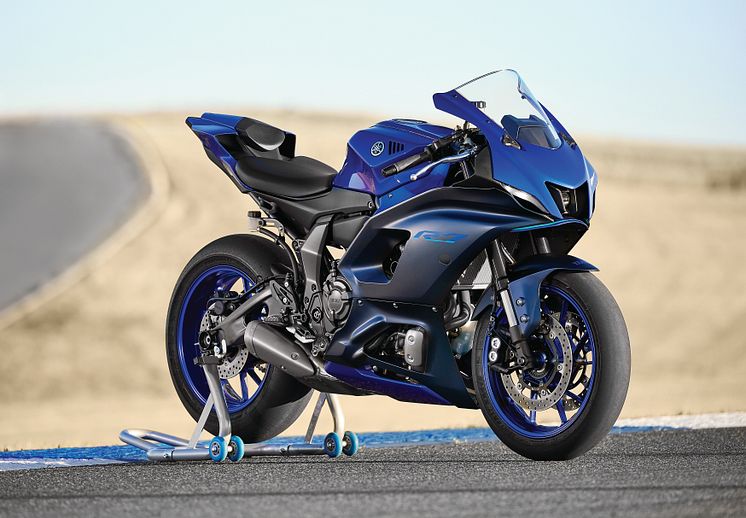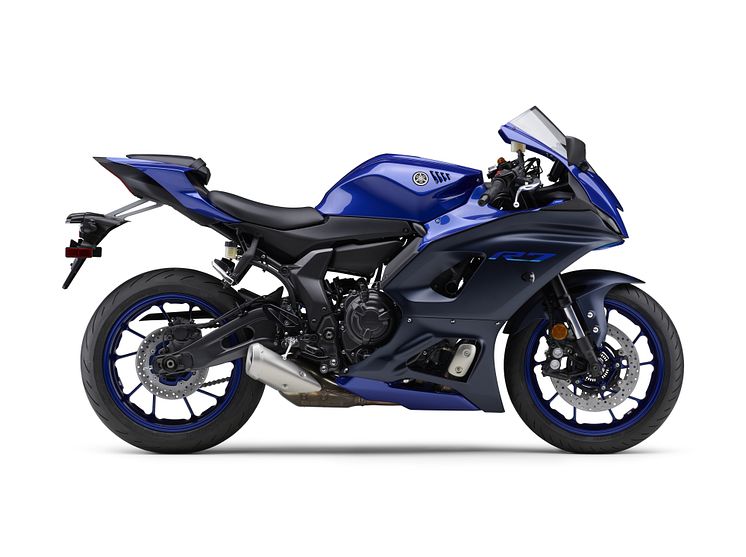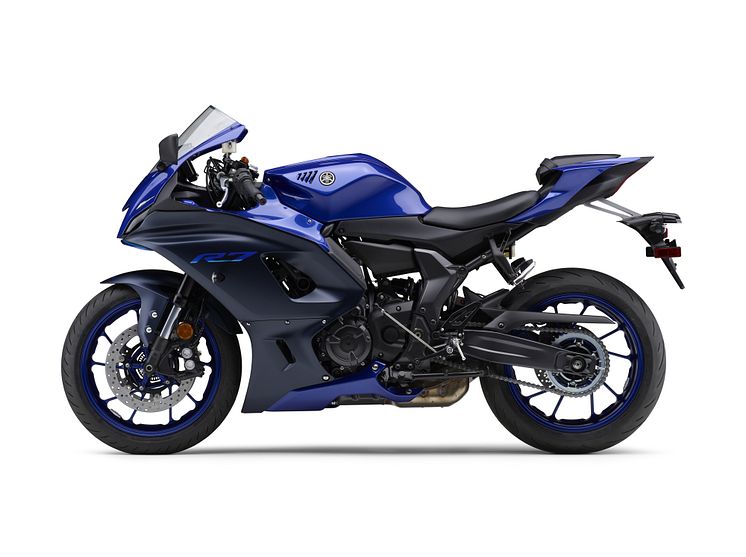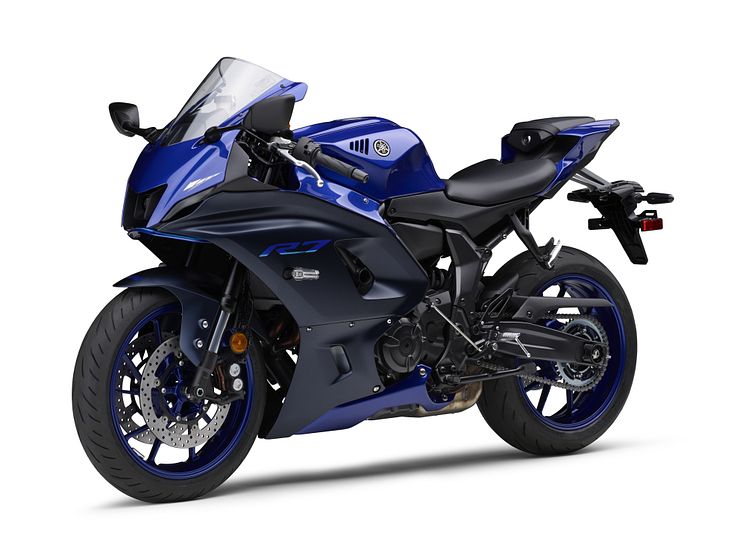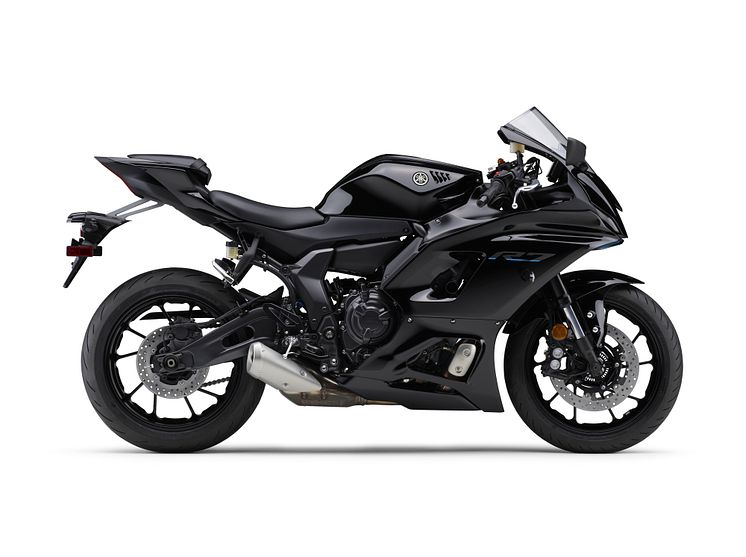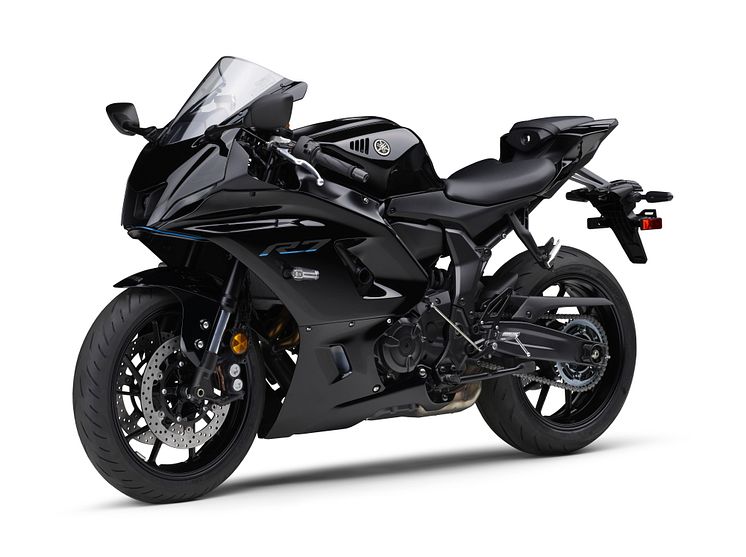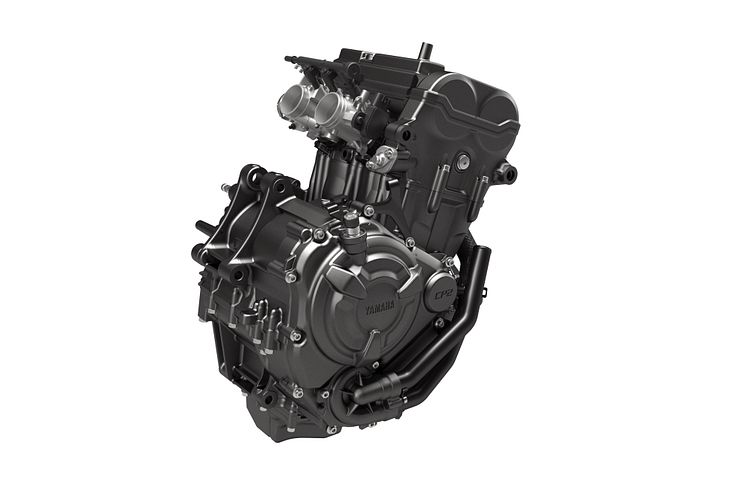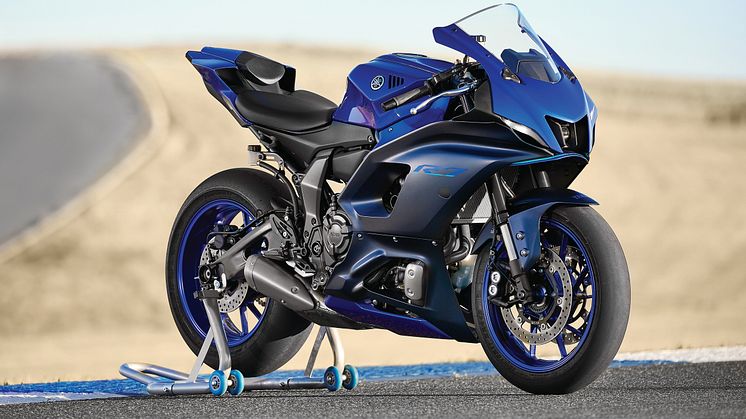
Press release -
Yamaha Motor Releases YZF-R7 Supersport for Europe and the United States -A new R-Series model in line with Yamaha’s platform strategy -
IWATA, May 19, 2021 - Yamaha Motor Co., Ltd. (Tokyo: 7272) will release the new YZF-R7 supersport model, featuring a 689 cm3 engine developed based on Yamaha’s Crossplane Concept* and mounted in a lightweight frame, into Europe and the United States, with a Japan domestic launch scheduled after the winter of 2021.
The YZF-R7 was developed under the concept of “A Fun Way to Master a Supersport.” Using the main parts and components of the MT-07, which has gained a following as a sport bike suitable for a wide range of riders, the YZF-R7 aims to be a supersport model that motorcyclists of a wide range of skill levels can fully extract its performance from and blends cutting-edge supersport styling with sporty handling.
The main features include 1) an easy-to-use CP2 engine providing an exhilarating and sporty ride, 2) a lightweight frame tuned for well-balanced rigidity, 3) an inverted front suspension with excellent front-end feedback and a model-specific rear suspension, 4) a sporty riding position, and 5) styling carrying on the R-Series’ DNA. Along with the YZF-R7’s cool looks, users can enjoy riding across various scenes, from urban areas, highways and twisty roads to trackdays at circuits.
*A development ideal to create linear torque development in response to the rider's throttle action by efficiently drawing out the combustion torque generated in the combustion chamber with little inertial torque.
YZF-R7 Main Features
1) Easy-to-use CP2 engine providing an exhilarating and sporty ride
The
YZF-R7 adopts the same CP2 (crossplane 2-cylinder) engine spec as the 2021 MT-07, but the secondary ratio has been optimized from the 43/16 = 2.678 of the MT-07 to 42/16 = 2.625 to produce an exhilarating and sporty ride.
In addition, the YZF-R7 features the first Assist & Slipper (A&S)®* clutch for an MT-07-based model. This not only lightens clutch lever pull, but also inhibits the effects of back torque on the bike’s behavior and reduces excessive engine braking for greater rideability.
*“Assist & Slipper” and “A&S” are registered trademarks of F.C.C. Co., Ltd.

2) Lightweight frame with tuned rigidity balance
The YZF-R7 features a lightweight backbone style frame tuned for rigidity balance. The frame structure itself is the same as the MT-07’s, but various parts have had their fastening rigidity optimized, such as the aluminum center brace using rigid mounts. This improves torsional rigidity around the swingarm pivot and the rest of the frame’s overall rigidity balance has been tuned as well to accommodate this. Together with the benefits of the inverted front suspension, the frame is a key factor in the YZF-R7’s sporty handling and offers linear response to inputs from the rider, nimble response when changing lean directions, responsiveness to rider movements and more.
3) Inverted front suspension with excellent front-end feedback and model-specific rear suspension
A newly designed inverted front suspension with 41 mm inner tubes has been adopted and provides excellent front-end feel when cornering, braking, etc. The damping force and spring rate have been optimized for the bike, with the settings focused on making machine behavior easy for the rider to understand and for handling feel, etc., on twisty roads and short racetracks.
The rear adopts a linked-type Monocross suspension and the shock unit’s damping characteristics and spring rate have been specifically developed for the
YZF-R7. With the new machine’s dimensions, the fastening position of the link has also been adjusted and the shock unit is mounted horizontally like the MT-07’s, which makes efficient use of space and contributes to mass centralization and a compact chassis.

4) Sporty riding position
The riding position makes it easy to quickly get into a tuck and provides excellent hold for the rider under braking. In addition, the back sweep and drop angles of the sporty, separate clip-on handlebars were set for balance in relation to the position of the rider’s hips and the footpegs. The seat width is narrow and gradually widens toward the rear, providing ample freedom for seat positioning and helping the user enjoy riding across a wide range of scenes, from windy roads and highways to trackday sessions. In addition, the seat’s height difference with the passenger seat also gives it the look of a bump stop.
5) Styling inheriting R-Series DNA
The design concept for this model was Skinny Proportions for Perfect Control. The slim engine of the
YZF-R7 has a small moment of inertia and offers tangible benefits, particularly when cornering and changing lean directions. The small frontal projection area also contributes to reduced air resistance. Thus, the realization of these Skinny Proportions is connected to the fun of riding the machine.
Furthermore, the
YZF-R7 carries on the iconic R-Series points found in the styling of the YZF-R1, such as the silhouette formed by primarily horizontal lines, fairings maximizing aerodynamic efficiency, an M-shaped air duct and twin-eye position lights. The headlight uses a single bi-functional LED light situated in the center of the M-shaped intake duct.

*U.S.-spec model
Other features
– First MT-07-based model with the Quick Shift System (QSS) for quick and smooth clutchless upshifts (optional add-on)
– Radial master cylinder contributing to excellent brake lever control and radial-mount calipers aiding strong braking force.
– New full-LCD instrumentation (high-contrast negative display)
YZF-R7 Main Specifications (U.S.-spec model)


YZF-R7 Feature Map (U.S.-spec model)

(All pictures which appear on this article are the U.S. specification including data for download.)
Topics
Categories
*This is a dedicated e-mail providing Yamaha Motor PR materials for viewing by media journalists.
We request that you refrain from using the materials and photographs on this e-mail for purposes other than media reporting.

